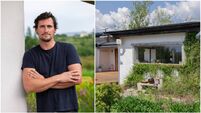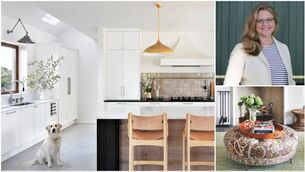Room up top: The best bunk beds for super sleepovers
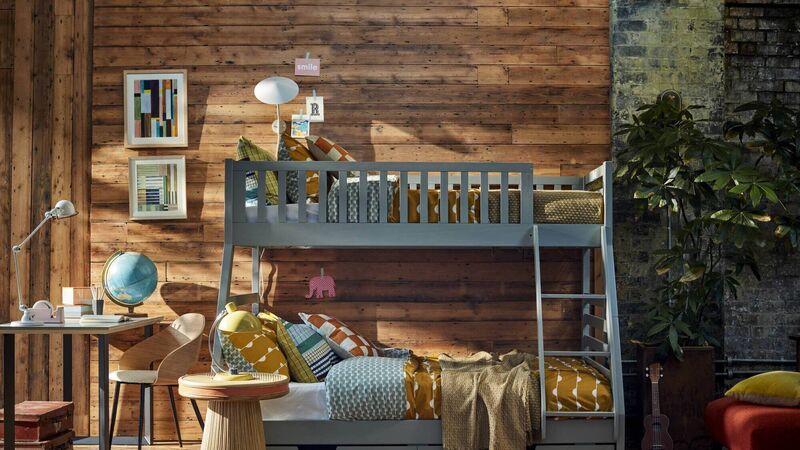
Cabin-style bunk beds for up to three sleepers, with small double and single overhead; €1234 in grey or white with two open-coil mattresses as standard, DFS.
When you’re nimble and newly minted, sleeping aloft is just exciting.
As sleepover hosts, we all know young children want to camp as close to each other as possible, and bunks allow plenty of chatter. Bunk beds, mid-sleepers and high-risers have an intrinsic cosiness to them. Where there’s a double with a bottom level there’s the comforting canopy of the bed overhead, and on the top rank, there’s the enclosure of the ceiling and a certain amount of rank among siblings.
Toddler beds and themed under-sized frames are soon outgrown. That said, any raised bed must be age-appropriate. Very young children are best kept closer to Earth. Every child’s dexterity and coordination is different. If you have children under eight, a lofted bed of 120cm-130cm (to the top rail) is about right, with around 80cm of sitting/crawling height if open below.
That bit lower they are far easier to make up. Six-year-olds do sleep in bunk beds, but it is vital to ensure they don’t play wildly up there or sleep more than one to a single bed, making the bed likely to sway.
Low loft beds offer that up-in-the-air thrill without the danger and can edit in tents, curtains and caves (great for shrouding the toy mountain), extra sleeping drawers, storage options and even a little slide for tinies to swoop down in the morning. System beds come in all sorts of configurations, fantastic for smaller homes where every metre counts, but watch those prices for age-stage choices.
The height of most proper bunks (rather than high platform singles) will be around 152cm to the top of the top mattress. The ideal age for these beds is 8 years plus. A high loft bed, suited to children of 10 years or more, can be as high as 180cm with or without a bottom bunk.
The upper bunk of a full-sized bunk bed of 150cm to 180cm high, is not considered safe for an under-six. I can’t stress enough the importance of sturdy guardrails at any age. Aim for rails that finish at least 16cm over the mattress top all around the bed, including the back wall.
If I kid can get wedged in a weird spot — they will. If there’s anything bar carpeting in the room, a thick rug will not only prevent serious injuries but will give feet traction in socks when mounting the ladder. A night light will ensure they can get up or down from the bed safely for loo trips.
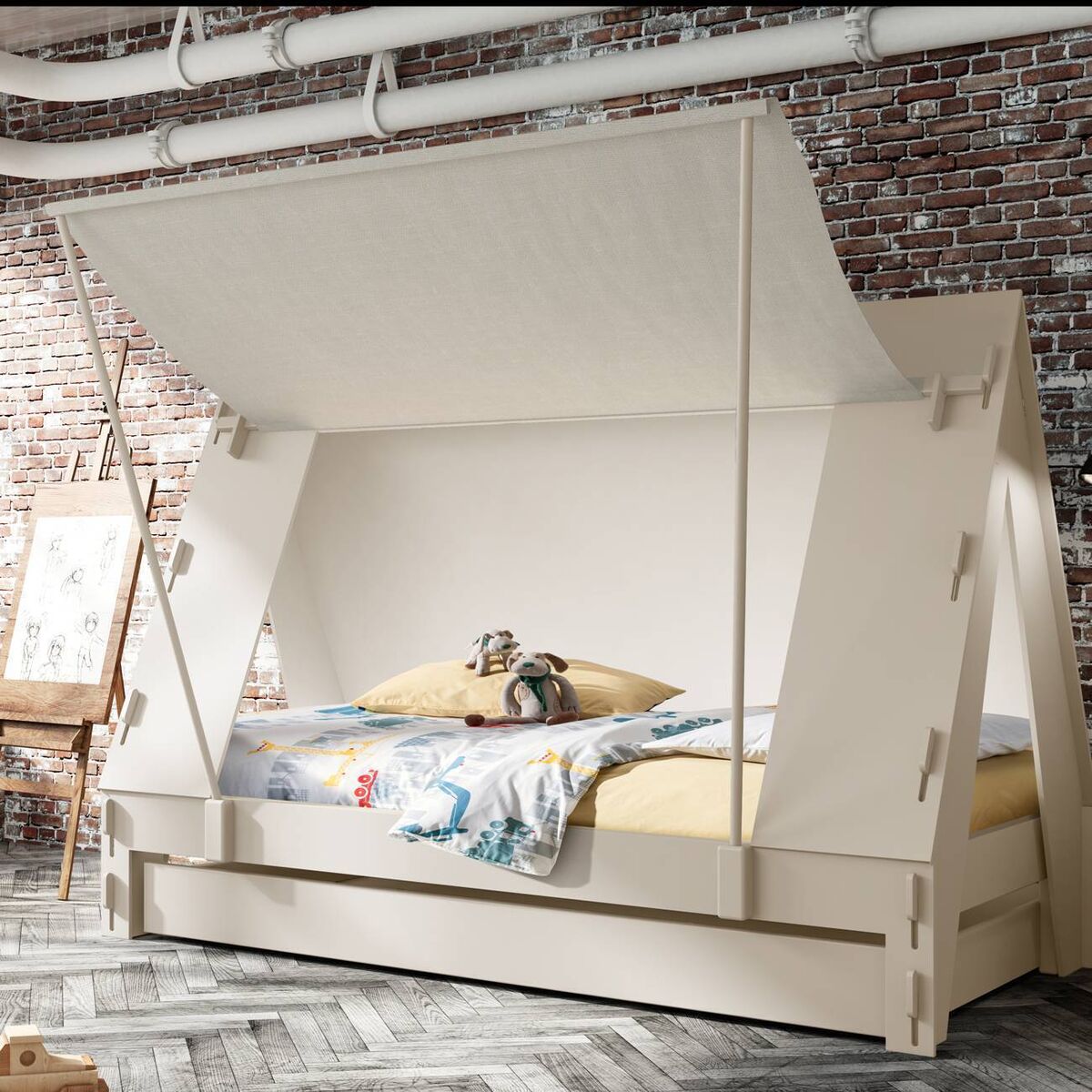
Obviously, most kids and teens will want to be able to sit up in bed to at least read. At 150cm, that’s 90cm under a standard 240cm ceiling. Enough for most teenagers, just watch out for intrusive sloping ceilings. A lower ceiling closing in on a sleeper is unnerving, and with standard central heating, the convection current of warm air upward and across could make the situation stifling in a small room.
Ensure there is sufficient ventilation with trickle vents to windows and/or passive vents. Ensure the bed is well away from doors and light fittings and at least 2m from any window. It’s a good idea to undress the bed completely and do a stability check at least twice a year.
The top bunk of any lofted bed, including a high sleeper with say a desk below, demands a slender mattress. Deeper, heavier mattresses not only put a lot of strain on the structure of a soft wood bunk but may lift the sleeper higher than the guard rails can manage to keep them safe. 13cm to 16cm low-profile mattresses are perfect in memory foam, open springs or pocket springs depending on your budget.
On the bottom bunk, a thick, plush mattress with a pillow top will push the sleeper closer to the underside of the top bunk. Again, look for a slender profile in good quality materials with proper support especially as children get older. A small double, pocket-sprung mattress will get a child right through from 8 years to adulthood.
Euro sizings for mattresses can vary by 5cm to 10cm, so ensure you get the right fit. The rails supporting the mattress should be no more than 7.5cm apart.
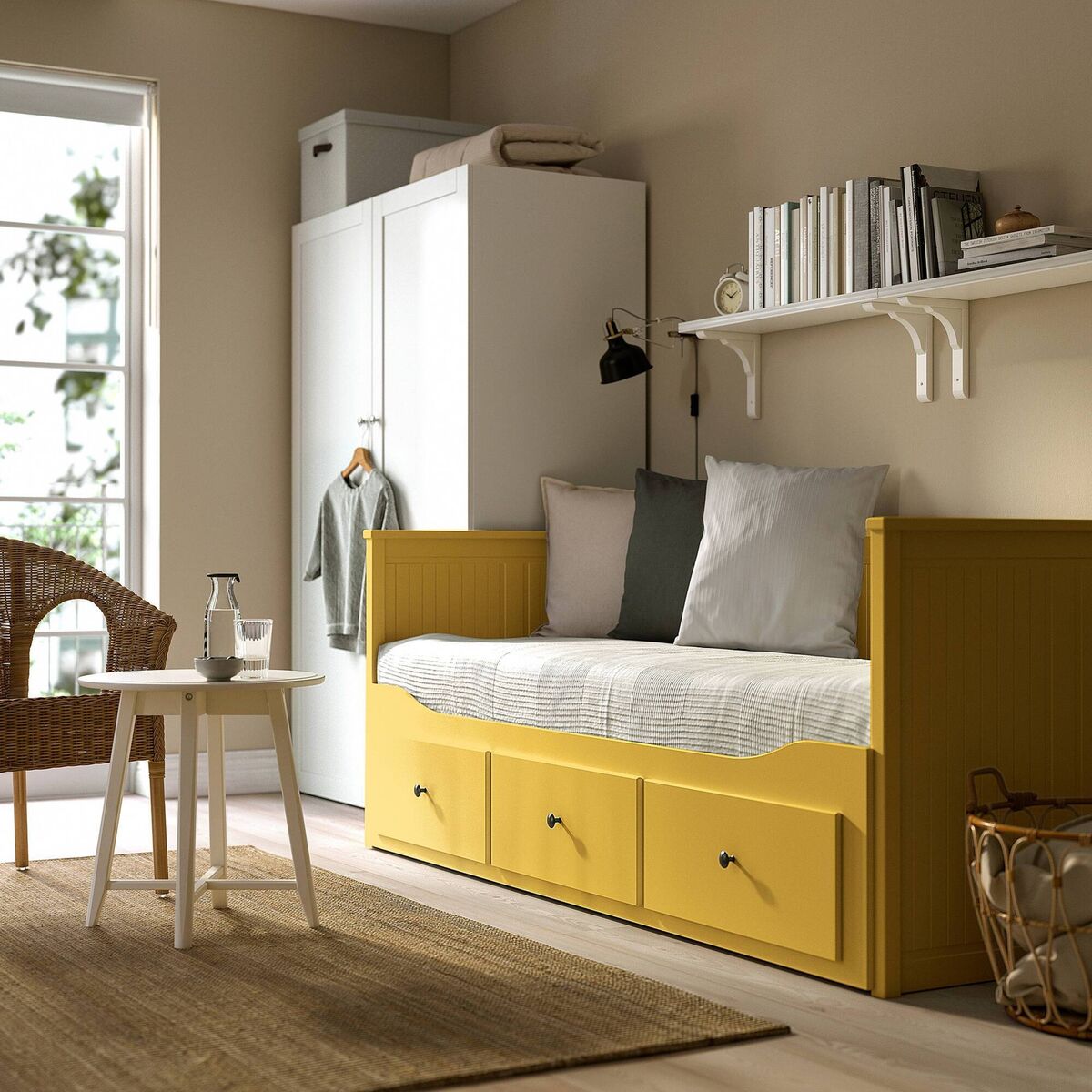
Singles over single bed frames are the recognisable traditional bunk bed and take up just the footprint of one single bed and a bit of landing room for the ladder (90cm x 190cm). Look for a variety of entry points for the ladder to suit your space. It is possible to find these beds with the sleeping platforms cleverly offset to allow more storage on the ground in L shapes and longer profiles.
Start with the Ikea Vitval — two singles and a single trundle for just €479. Complete with your choice of mattress and Mojlightet pillow and bed pocket — tailored for the Vitval series. Keep in mind, that lower bunk (once the nest begins to empty) can be fluffed up into a daybed/sleeper for a solo room. Losing the bottom bunk in a 90cm x 190cm loft, expect to pay in the area of €550 and upwards or a furniture suite and the frame without the mattress in particleboard. If you want an elaborate treehouse, London bus or gaming bunks, expect €1200 plus.
A small double frame (120cm x 190cm) or double (136cm x 190cm) with a single bed over-head described as a triple-sleeper, offers an older child as the primary resident, a bit more room, and a place to stash even two friends for sleep-over (one bunking with them).
Add a trundle or bed in a drawer to the base and you have room for four or even five companions. Trundles can be stacked into two tiers for wildly sociable families. The only downside with the single over double is that the ladder reach can intrude on the space around the base double.
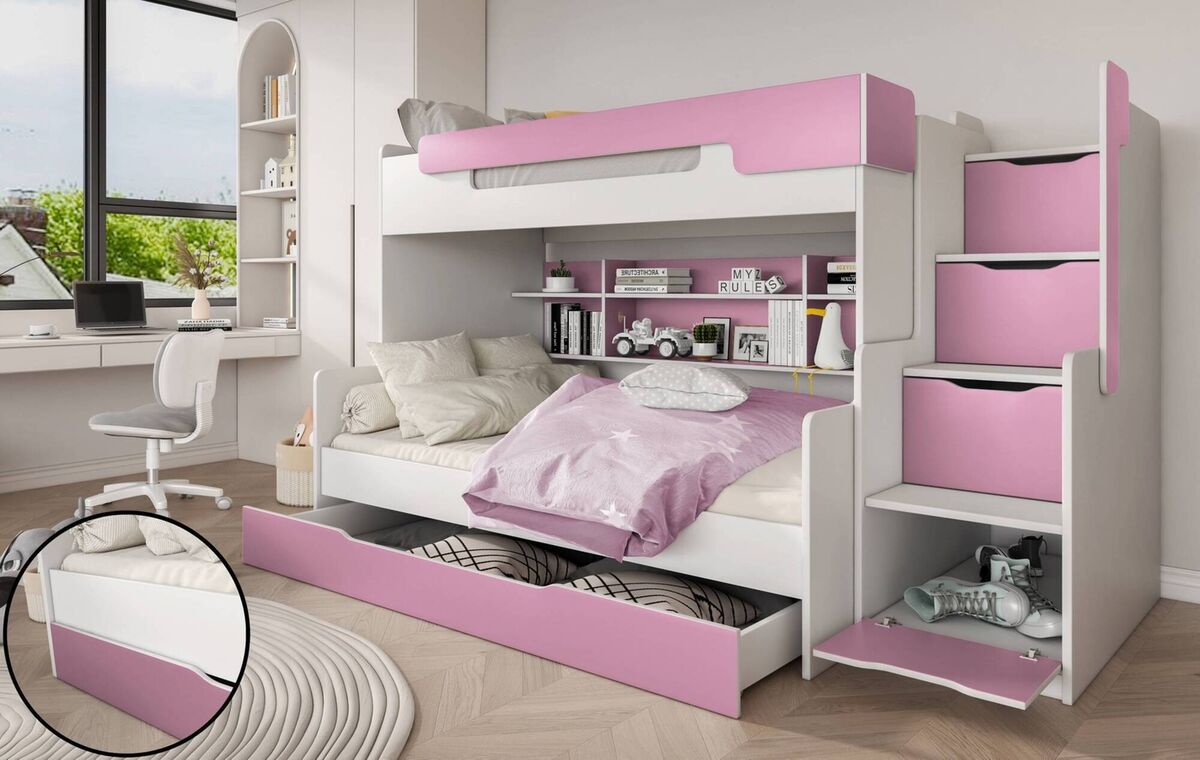
The Little Folk Fargo puts the single bed perpendicular to the base double at the head of the bed, unusual at €1399, jellybeangroup.com. Standard pricing starts as low as €299 for a durable, metal triple-sleeper, the Teri, without mattresses, mattressmick.ie. A niche in built-in storage walls (sometimes termed living walls) provides a magical cabin bunk. Wall Paint in Napoleonic Blue, Chalk Paint in Napeolonic Blue and Scandinavian Pink, Ticking and Linen Union curtains; Annie Sloan.
Are bunks and platforms sustainable choices? In adult-sized mattresses, they will at least get you to the late teens with most youngsters and in a soft-wood construction some can be taken apart, and flipped into day beds, singles or planking for various DIY projects. Metal beds, unless engineered to be metamorphic include less storage options, but do tend to have better weight capacities.
If you inherit a raised bed of any kind, it’s vital to check every screw and member for safety — and second-hand buys are not recommended by most bed suppliers. If you’re using bunks to free up more play space and intend to part the beds into two singles down the road, ensure it’s intended for that structurally.
So, what about alternatives for even teen friends over-nighting? Daybeds and sofa beds offer all sorts of choices where you have the room or can assign visitors to the playroom or den for the night.
Daybeds are underrated by everyone but Ikea (Swedes love their versatile cabin beds, traditionally built right into the wall). They deliver both extra lounging spots and a small or full double bed when pulled open over a drawer base to carry extra linens (or an extra trundle).
Ensure any high-sided design has a removable foot-board to allow for sprouting kids or be prepared to reserve your daybed for younger, smaller visitors. Look for a sprung slatted base if you can add your own mattress. Sofa beds can be muscled over a hinged mechanism or just folded out. For older children, having a sofa delivers a welcome studio feel in their room that they can style up as they start acting out “adulting” as my daughter calls it.
Always read the rating. If an integrated mattress is rated for occasional use, it will quickly degrade if used year-round.





